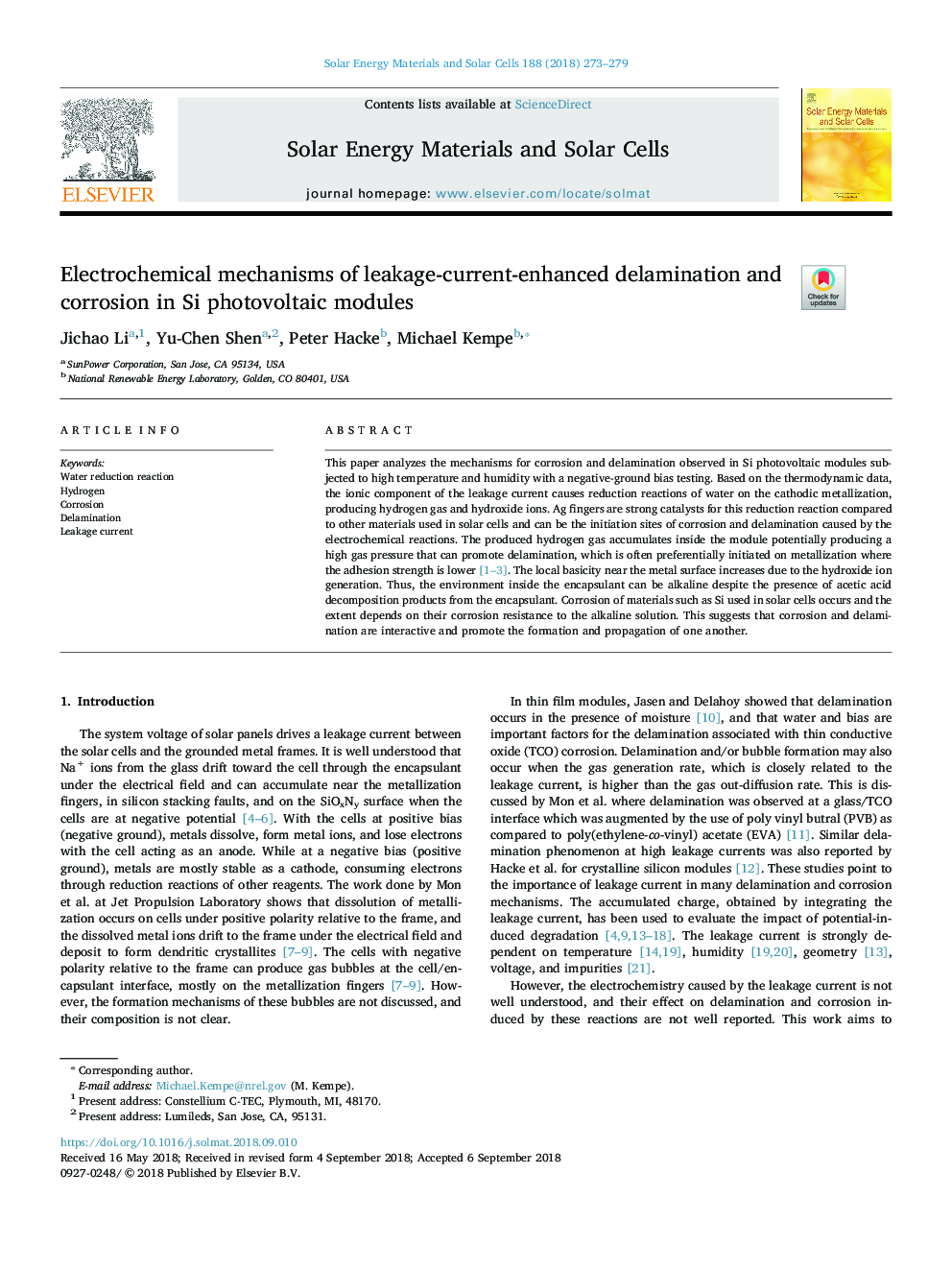| کد مقاله | کد نشریه | سال انتشار | مقاله انگلیسی | نسخه تمام متن |
|---|---|---|---|---|
| 11031716 | 1645929 | 2018 | 7 صفحه PDF | دانلود رایگان |
عنوان انگلیسی مقاله ISI
Electrochemical mechanisms of leakage-current-enhanced delamination and corrosion in Si photovoltaic modules
ترجمه فارسی عنوان
مکانیزم های الکتروشیمیایی از نفوذ و خوردگی در جریان نشت جریان در ماژول فتوولتائیک سی
دانلود مقاله + سفارش ترجمه
دانلود مقاله ISI انگلیسی
رایگان برای ایرانیان
کلمات کلیدی
واکنش کاهش آب، هیدروژن، خوردگی، لایه لایه شدگی، جریان نشت،
موضوعات مرتبط
مهندسی و علوم پایه
مهندسی شیمی
کاتالیزور
چکیده انگلیسی
This paper analyzes the mechanisms for corrosion and delamination observed in Si photovoltaic modules subjected to high temperature and humidity with a negative-ground bias testing. Based on the thermodynamic data, the ionic component of the leakage current causes reduction reactions of water on the cathodic metallization, producing hydrogen gas and hydroxide ions. Ag fingers are strong catalysts for this reduction reaction compared to other materials used in solar cells and can be the initiation sites of corrosion and delamination caused by the electrochemical reactions. The produced hydrogen gas accumulates inside the module potentially producing a high gas pressure that can promote delamination, which is often preferentially initiated on metallization where the adhesion strength is lower [1], [2], [3]. The local basicity near the metal surface increases due to the hydroxide ion generation. Thus, the environment inside the encapsulant can be alkaline despite the presence of acetic acid decomposition products from the encapsulant. Corrosion of materials such as Si used in solar cells occurs and the extent depends on their corrosion resistance to the alkaline solution. This suggests that corrosion and delamination are interactive and promote the formation and propagation of one another.
ناشر
Database: Elsevier - ScienceDirect (ساینس دایرکت)
Journal: Solar Energy Materials and Solar Cells - Volume 188, 15 December 2018, Pages 273-279
Journal: Solar Energy Materials and Solar Cells - Volume 188, 15 December 2018, Pages 273-279
نویسندگان
Jichao Li, Yu-Chen Shen, Peter Hacke, Michael Kempe,
